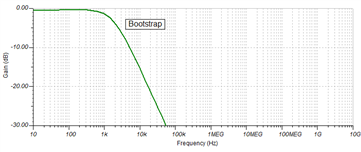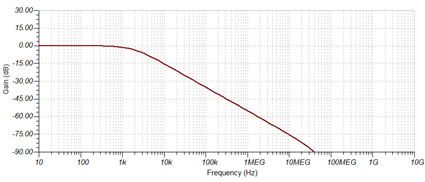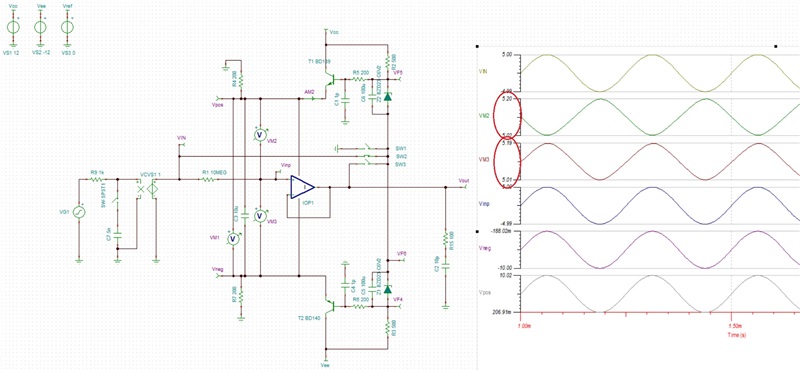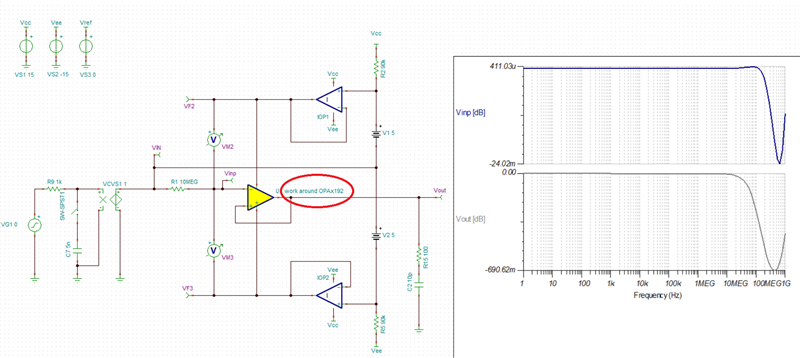Other Parts Discussed in Thread: OPA827, OPA810, OPA1656, UA741, OPA596, OPA593, LM4040, OPA197, OPA192
Tool/software:
Dear Support Team,
We are trying to verify the behavior of a supply-bootstrapped circuit using OPA828 in a TINA simulations. The purpose of the circuit is to reduce the common mode input impedance.
However, we can see no difference between SW1 short and SW3 short (bootstrap off vs. bootstrap from output) -- the bandwidth reamains unchanged as in the two graphs below.


We can also observe strange effects with SW2 short (bootstrap from input):

We have also tried OPA810, OPA827, OPA1656 with no better results.
Interestingly, when OPA828 is replaced with the venerable uA741, the simulation shows noticeable increase in bandwidth as one could expect.
The OPA828 model includes the input capacitance (parameter named "Zic"), what can be the reason we cannot see any improvement in the frequency characteristics due to the bootstrap for OPA828 while uA741 behaves as expected? Is that a problem of the model, or should we expect such results in reality?
Best regards,
Michal







 The three schematics above are identical except of the point of ground connection. None of the voltages calculated in the simulation are ground-referenced so why are they different? There should be 5 V between the terminals of every LM4040, but only the top LM4040 in the leftmost schematics behaves as expected. (Interestingly, LM4040_C25 model does not exhibit this problem, there is 2.5 V on each one.) It looks like there is a direct reference to system ground potential somewhere in the model (some hidded third terminal to GND) which causes that the model only works correctly in typical applications with anode at GND.
The three schematics above are identical except of the point of ground connection. None of the voltages calculated in the simulation are ground-referenced so why are they different? There should be 5 V between the terminals of every LM4040, but only the top LM4040 in the leftmost schematics behaves as expected. (Interestingly, LM4040_C25 model does not exhibit this problem, there is 2.5 V on each one.) It looks like there is a direct reference to system ground potential somewhere in the model (some hidded third terminal to GND) which causes that the model only works correctly in typical applications with anode at GND.















